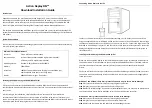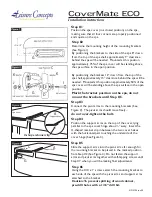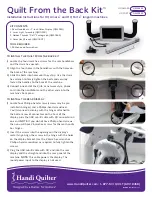
4
Reducing the Risk of Injury
Do the following to reduce the risk of injury:
u
Do not hold any posture for an extended period of time. If
possible, change your working posture several times a day. If you
can, work part of the day sitting and part of it standing.
u
Take periodic rest breaks during the day. A study sponsored by
the National Instate for Occupational Safety and Health (NIOSH;
R. Henning, University of Connecticut, 1992) found that adding
distributed rest breaks to the traditional work schedule
“forestall(ed) the development of discomfort in repetitive VDT
work.”
Try using this recommended minimum rest break schedule:
−
A 30-second break after each 10 minutes of work.
−
A 3-minute break after each 50 minutes of work.
−
A 15-minute break mid-morning.
−
A lunch break.
−
A 15-minute break mid-afternoon.
During each rest break, gently and slowly stretch your hands and
arms. During longer rest breaks, get up, walk around, and gently
stretch as much of your body as you can. Set a schedule of rest
breaks and make yourself take them. It is easy to focus on your
work and forget to take rest breaks; use a timer or a software
reminder program to help you remember.
During each rest break, focus on something far way to relax your
eye muscles. Avoid close focus activities like reading during a
rest break to allow your eyes to rest.
u
Keep your hands and arms warm. Warm up and gently stretch
your hands before you start working. You may find it helpful to
wear warm, fingerless gloves.
u
Keep a straight, or “neutral,” wrist position. Use wrist rests and
other supports during pauses to help you keep a comfortable wrist
position.
u
Use the minimum force necessary to activate switches (of any
type, on any device). Many people use far more force than is
required; this is frequently true for point-and-drag operations
using a mouse. Excess force puts unnecessary strain on tendons,


























